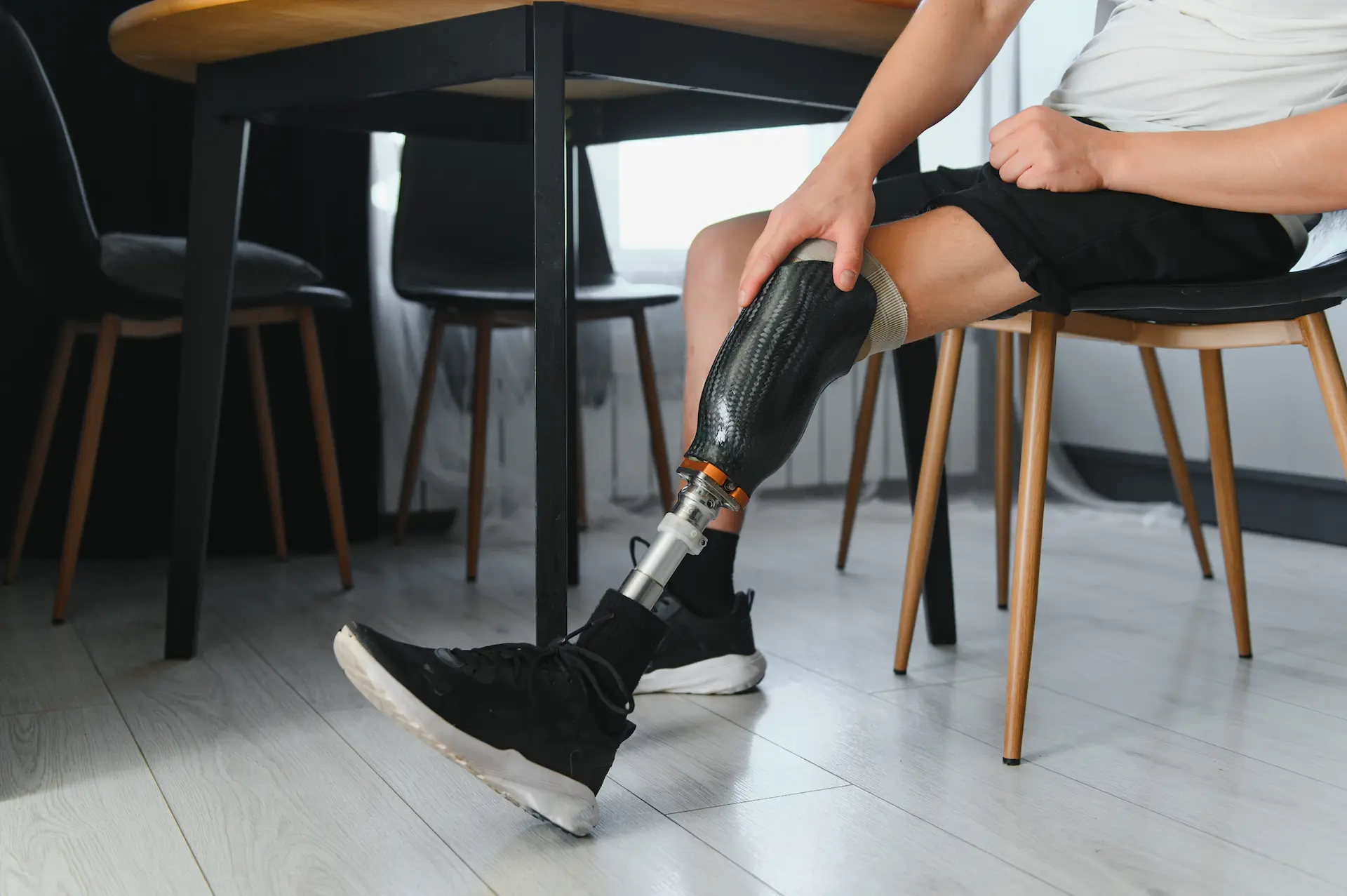
Understanding & Addressing Common Fears
Adjusting to a prosthetic comes with its share of emotions and questions. Here are some of the most common fears we understand you can feel during this time:
Fear of Discomfort or Pain During Use
When starting with a prosthetic, it’s natural to worry about discomfort or pain. Adjusting does take time, and some initial soreness is expected as your body adapts. However, proper care for the residual limb, using comfortable liners, and working closely with your healthcare provider can make a big difference.
Fear of Embarrassment or Appearance Concerns
Some people feel self-conscious about wearing a prosthetic in public. Building confidence takes time, but there’s no reason to be ashamed. Plus, you’d like to know that modern prosthetics can also be designed to reflect your personality.
Fear of Failure or Mobility Limitations
Worrying about falling or struggling with movement is natural. Know that setbacks are part of the learning process. Training with professionals and rehabilitation are key. Consistent effort, balance, strength, and overall mobility improvement will ease these fears.
Key Steps to Build Confidence in Prosthetic Use
Building confidence with your prosthetic starts with small, practical steps. Here’s what we recommend:
- Start with small movements to adjust physically and emotionally.
- Work with your prosthetist to fine-tune the prosthetic for comfort.
- Wear it for short periods initially and increase time gradually.
- Incorporate exercises to build strength and balance.
- Maintain open communication with your healthcare providers.
The Emotional Side of Prosthetic Adaptation
Adjusting emotionally to prosthetic use can be as challenging as the physical process. Frustration, self-consciousness, or even moments of doubt are completely natural during this process. It’s important to remind yourself that these emotions are part of the healing and adaptation journey. Building emotional resilience takes time, but being kind to yourself and keeping realistic expectations can make all the difference.
Connecting with others who use prosthetics can be a huge help. Support groups or online communities offer advice, encouragement, and reassurance. Sharing experiences reminds you you’re not alone in this process and helps build confidence.
Overcome Your Fears, One Step at a Time with UMES
At Unified Medical Equipment Solutions (UMES), we craft custom prosthetics and help you or your loved ones confidently adapt to use them. Our team focuses on making the fitting process precise and seamless, providing comfort and functionality.
From initial fittings to ongoing adjustments, we’re committed to supporting you throughout your prosthetic journey. We’ll be with you through every milestone, helping ensure your prosthetic fits perfectly as your needs evolve. Connect with us to learn more about how we can help.
